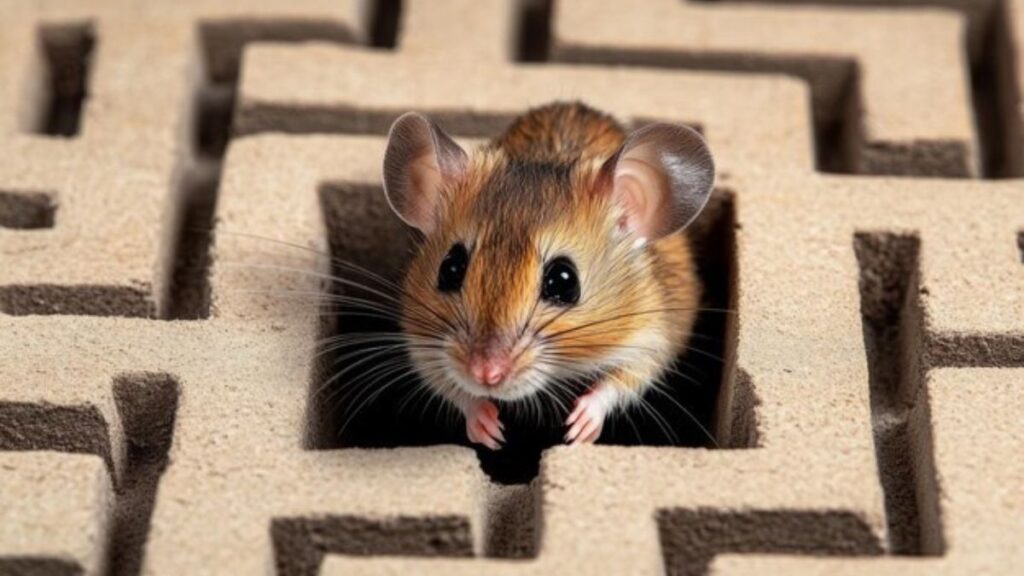If you’re a fan of the New York Times crossword puzzles, you know that they can be both challenging and rewarding. Each puzzle presents a unique opportunity to flex your mental muscles while uncovering clever wordplay and sometimes obscure references. Among the myriad clues, one might stumble upon a particularly intriguing one: “Naked Rodent NYT Crossword Clue.” At first glance, this clue may leave you scratching your head. But fear not! We’re here to unravel its mystery and guide you through the world of cryptic crosswords. Whether you’re an experienced puzzler or just dipping your toes into this delightful pastime, understanding how to decode such clues will elevate your solving game to new heights. Let’s dive in!
Explanation of a Naked Rodent NYT Crossword Clue
Crossword puzzles are a delightful blend of wordplay and logic. They challenge our minds while expanding our vocabulary. The New York Times Crossword is among the most prestigious, attracting solvers from all walks of life.
The clues often feature clever twists or puns. Each one serves as a mini-riddle waiting to be unraveled. This layer of creativity adds an extra thrill to the solving experience.
When approaching a clue like “Naked Rodent,” it might initially seem obscure. However, understanding its structure can reveal hidden meanings and direct us toward potential answers.
Deconstructing clues is essential for success in crossword puzzles. It allows solvers to think laterally and make connections that aren’t immediately obvious at first glance. Embracing this playful aspect transforms puzzle-solving into an enjoyable journey rather than just a task.
The Clue: Naked Rodent
The clue “Naked Rodent” may initially stump many crossword enthusiasts. However, it’s a playful way to refer to the fascinating naked mole rat. This peculiar creature defies convention in the animal kingdom.
With its hairless body and distinctive social structure, the naked mole rat stands out. Native to East Africa, these rodents thrive underground in complex burrow systems. Their unique adaptations allow them to live in harsh environments with little oxygen.
When you encounter this clue, think outside the box. It’s less about finding an obscure term and more about recognizing a quirky twist on nature’s wonders. Crosswords often challenge our thinking patterns; this one is no exception.
Next time you see “Naked Rodent,” remember that it’s not just a riddle but an invitation to explore the oddities of wildlife!
Solving the Puzzle
Solving a crossword puzzle can feel like a treasure hunt. Each clue serves as a breadcrumb leading you closer to the answer. The thrill lies in piecing together snippets of knowledge and intuition.
When faced with the Naked Rodent NYT Crossword Clue, start by considering what it might refer to. Ask yourself: What animals fit this description? Think about their traits or habitats.
Don’t hesitate to jot down possibilities, even if they seem far-fetched at first. Sometimes the most unlikely answers spark connections that unlock more clues.
Utilizing wordplay can also help unravel tricky hints. Anagrams or synonyms often hide within the seemingly straightforward phrasing of clues.
Collaborating with friends adds another layer of fun and insight into solving these puzzles too. Sharing ideas brings fresh perspectives that may lead directly to your elusive answer!
Unmasking the Answer
To unravel the Naked Rodent NYT Crossword Clue, one must first consider what exactly qualifies as a “naked rodent.” Many crossword enthusiasts quickly think of the naked mole rat.
This fascinating creature is known for its hairless appearance and unique social structure. It thrives in underground colonies, quite unlike other rodents. Such distinctive traits often make it a favorite among puzzle creators.
When you finally arrive at “mole,” an exhilarating sense of accomplishment washes over you. Each letter fits perfectly into place like pieces of an intricate jigsaw puzzle.
It’s not just about finding answers; it’s about embracing the journey through clues that lead to unexpected revelations. The thrill lies in piecing together knowledge from various fields—science, culture, and language—all while enjoying the challenge each clue offers.
History of Cryptic Crosswords
Cryptic crosswords have a fascinating history that dates back to the early 20th century. They originated in Britain and quickly gained popularity among puzzle enthusiasts. The first known published cryptic crossword appeared in 1924, created by Arthur Wynne.
These puzzles are unique because they require solvers to think outside traditional definitions. Each clue is a mini riddle, blending wordplay with obscure references. This complexity adds an extra layer of challenge compared to straightforward crosswords.
The format has evolved over the years, influencing various styles worldwide. Different countries developed their own versions, but the British style remains iconic for its wit and cleverness.
Today, cryptic crosswords attract millions of fans eager to test their linguistic skills and creativity through these intricate brain teasers. As more people embrace this art form, it continues thriving in newspapers and online platforms alike.
Conclusion and Tips for Solving Cryptic Crossword Clues
Solving cryptic crossword clues can be a delightful challenge. When faced with the Naked Rodent NYT Crossword Clue, remember that context and wordplay are your best friends. Focus on each word individually and consider synonyms or related terms.
Here are some helpful tips to enhance your solving skills:
– Familiarize yourself with common crossword abbreviations.
– Practice identifying themes within puzzles; they often lead to breakthroughs.
– Don’t hesitate to jot down potential answers even if you’re unsure. You can always revisit them later.
– Utilize online resources for additional hints, but try to rely primarily on your own knowledge first.
Embrace the intricacies of crosswords as part of the fun. Each puzzle is an opportunity for learning and mental agility. Happy puzzling!



